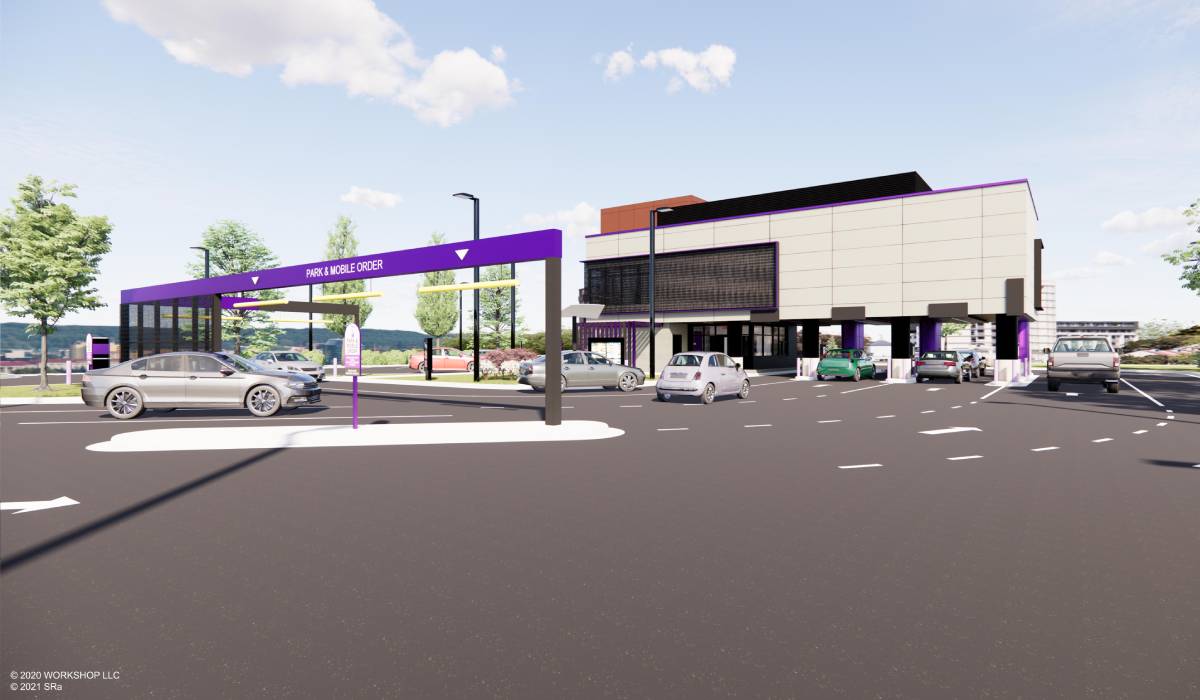The restaurant industry finds itself on the verge of a new era. More than a year into the COVID-19 pandemic, it’s clear that the eating establishments of tomorrow won’t be the same as they were pre-2020. Changing restaurant design trends serve as a particularly vivid embodiment of this shift.
After an extended period of hibernation, the dining sector is starting to pick up steam again. There were nearly 16,500 reopenings in April 2021 alone, and roughly 6,600 new food businesses opened in May. As new and old establishments alike open their doors, restaurant renovation is likewise accelerating.
Why are Restaurants Renovating Now?
The pandemic has served as a catalyst for renovation, presenting both necessity and opportunity. As COVID-19 cases accelerated, many restaurants had to adapt to ensure the well-being of their staff and customers. Likewise, many had to change in the face of rising regulations if they hoped to stay in business.
READ MORE:
14 Glimpses Into the Fast-Food Restaurant of the Future
Taco Bell Unveils its Most Innovative Restaurant Ever
These same restrictions provided a rare opportunity to renovate. With decreased foot traffic, workers could complete upgrades during regular business hours, lowering costs and finishing projects sooner. Many consumers also shifted to ordering takeout, reducing dine-in numbers and letting businesses renovate with minimal disruption.
While many of the changes restaurants made reflect pandemic-era concerns, they could lead to long-term improvements. The past year has revealed the industry’s weak points, providing a path forward. Here are a few ways these realizations have affected restaurant design trends.
Designing With Safety in Mind
Perhaps the most obvious restaurant renovation trend to emerge recently is an emphasis on safety. As the public learned how easily a virus like COVID-19 could spread, many restaurants realized their layouts might be unhygienic. Consequently, many renovations focused on making restaurants cleaner and healthier.
Many restaurants have adapted to reduce shared touchpoints, which could transmit potentially hazardous microbes. For example, digital, QR code-based menus have replaced physical alternatives in many establishments, with some also offering app-based, touch-free payment. A smaller but still growing trend involves using sushi-style conveyor belt systems to deliver food to customers.
HVAC systems have also seen widespread attention as restaurants place more emphasis on indoor air quality. Establishments also prefer nonporous furniture materials like metal and plastic over wood and fabric to enable easier cleaning. While these changes came about because of COVID-19, they’ll also help prevent future disease outbreaks.
Improved Flexibility
Another recent restaurant design trend that reflects pandemic-era concerns is a shift toward flexibility. Capacity restrictions and growing concern over crowded places quickly hampered enthusiasm over in-person dining. In response, many restaurants adopted a hybrid approach and renovated to accommodate that flexibility.
Open kitchens have gained popularity to accommodate takeout orders in restaurants that previously didn’t offer them. Many places now feature large pickup counters, letting to-go orders flow seamlessly without getting in the way of in-person dining. Technological renovations have also picked up, with restaurants embracing app-based ordering to make takeout and delivery smoother and less disruptive.
Ghost kitchens have also become more popular as a flexible, pandemic-resistant business model. These changes improve the industry’s flexibility, helping it serve dine-in, takeout and delivery customers regardless of which option becomes more dominant. After the pandemic, this balance could help restaurants adapt to shifting consumer trends.
Maximizing Open Space
As restaurant renovation has picked up, many establishments have made an effort to embrace open space. Many areas that restricted dining capacity made exceptions for patios and other outdoor areas. Naturally, restaurants adapted by expanding their outdoor seating, either extending existing sites or building new ones.
Even as restrictions fade, these renovations continue to appeal to customers. One 2020 survey found that 64 percent of surveyed customers planned to eat outdoors, even in the winter. This indicates that guests may be more comfortable dining in alfresco areas, and these trends might persist beyond the pandemic.
Given high real estate prices, not every restaurant could afford to expand outdoor dining but still found ways to maximize open space. Some are installing larger windows and more operable walls to create an outdoor feeling, even indoors. Establishments that emerge at the heels of the pandemic will likely exhibit the same design choices, making spaces feel more open to increase comfort.
Pandemic-Era Restaurant Renovation Could Reshape the Industry
The restaurant industry is in a unique period now, one that will mark a shift in restaurant design trends. The challenges and opportunities of the pandemic have kickstarted widespread restaurant renovation in a change that will leave its mark on industry history. While these transitions may be disruptive at first, they’ll lead to long-term benefits.
The design changes restaurants are going through highlight the industry’s resilience and adaptability. These renovation trends will make restaurants more flexible, efficient and safe, helping them survive the pandemic and future challenges. The industry is changing for the better, and these shifts highlight that.
Emily Newton is the Editor-in-Chief of Revolutionized Magazine. She has over three years experience writing for the food and beverage industry.












